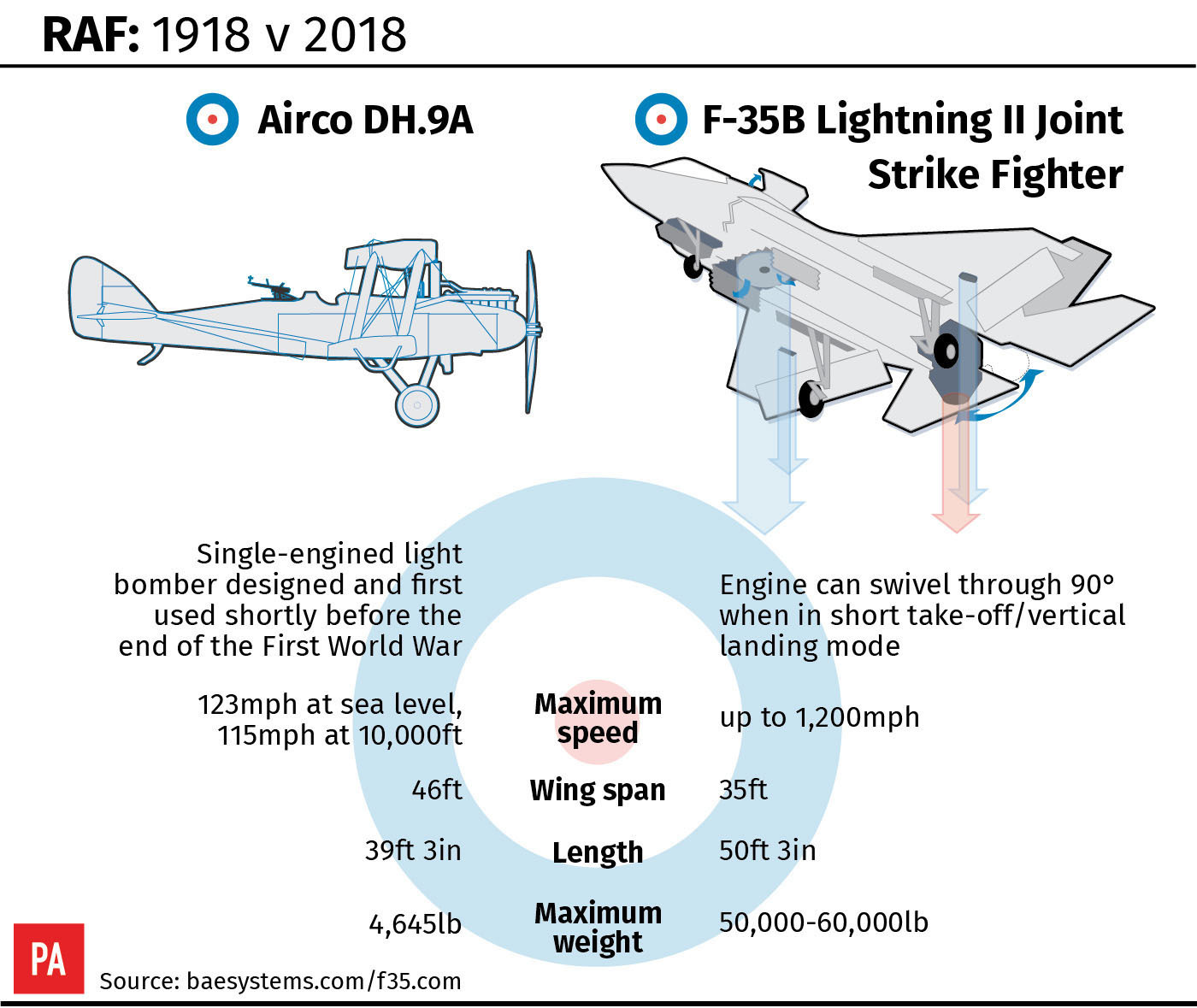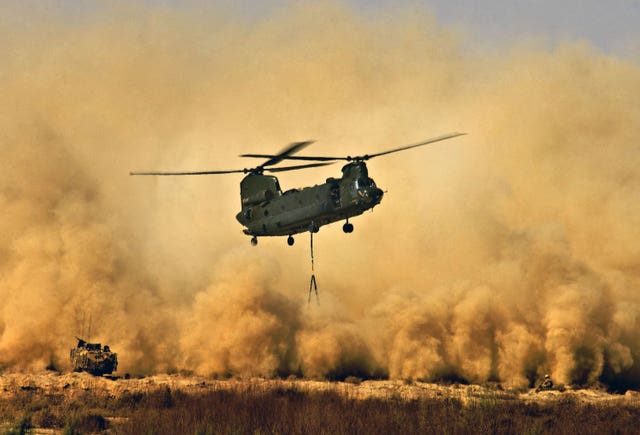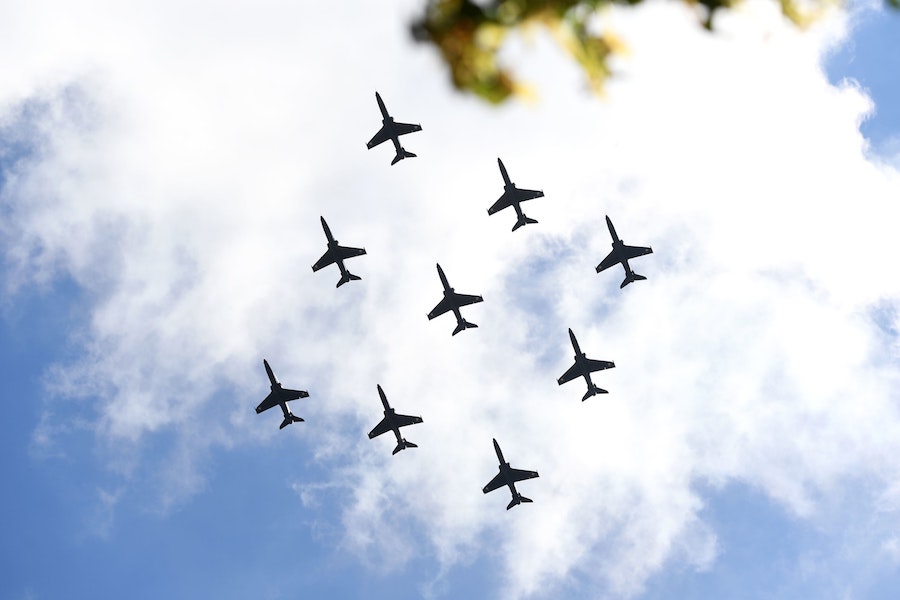All you need to know about the RAF centenary celebration flypast
The largest concentration of military aircraft in recent memory will descend on the skies above London as the Royal Air Force marks its centenary year.
Up to 100 jets, helicopters and aeroplanes from across a range of different eras of RAF history – including Spitfires and modern state-of-the-art aircraft – are expected to take part.
But how has the spectacle been organised and planned? Here are some of the questions surrounding the event on July 10.
– Which aircraft will take part?
Weather and serviceability dependent, it is expected the new cutting-edge stealth fighter F-35 jets will feature, as well as helicopters including the Puma, Chinook, Juno and Jupiter.
We are VERY excited to reveal the line-up for the #RAF100 flypast on 10 July. If you can’t make it into London, but are in the surrounding area, here’s the route the aircraft are taking in and out of London. Keep your eyes to the skies so you don’t miss out! pic.twitter.com/Rln2pBVCXY
— Royal Air Force (@RoyalAirForce) June 26, 2018
Aircraft from the Battle of Britain Memorial Flight including the Dakota, Lancaster, Hurricane and Spitfire are also be part of the line up, as well training aircraft including the Prefect, Tucano and Hawks.
The Hercules, Atlas A400M, C-17, BAe 146, Sentinel, Voyager, Shadow, Rivet Joint, E-3D Sentry, Tornado GR4, Typhoon and Red Arrows are also set to appear.
– Will 100 aircraft fly on the day?
Wing Commander Kev Gatland said the weather across the holding areas, where the aircraft take off from, over London and the areas they disperse to afterwards is key and may affect the numbers involved.

A Spitfire is in the line-up
If the weather is bad or unsuitable in any of these areas, some aircraft may not join the flypast, or it could be cancelled altogether.
Having spent 11 months organising the event, he said operational commitments of the aircraft is another reason why they might not take part, as is the serviceability of each one.
– How will it all happen?
The aircraft will take off from where they are based and fly into their designated holding areas – this is where they will circle and move into their formations until it is time to join the flypast.

It is expected that the flypast will begin to form up over Suffolk to the west of Ipswich at around 12.45pm before heading towards Colchester, and then Chelmsford.
The formation will continue over the M25, Stapleford Abbotts, Hainault Forest and on to central London – passing Olympic Park, Hackney, Bethnal Green, and Shoreditch before getting to the Mall at around 1pm.
– What speeds are the aircraft doing?
Wg Cdr Gatland said: “The front aircraft the helicopters are doing 90 knots, so about 100 miles an hour, the back aircraft which will be the Red Arrows are doing about 300 knots – just over 300 miles an hour.
“They obviously compress, they are at their tightest when they go over Buckingham Palace with a 30 second spacing in between.
“At that point we need to geographically deconflict them all safely using height, track lines away from each other and timing to keep them all clear.”
– How high will the aircraft be flying?
Wg Cdr Gatland said they will be stacked between 1000 ft to 1200 ft above the ground. He said their heights are alternated “through wake turbulence” and to provide space if the aircraft “happen to get too close”.

A cutting-edge Chinook will feature in the flypast
– What happens after the aircraft have passed over Buckingham Palace?
Wg Cdr Gatland said the dispersal, or what is known as egress, is where the aircraft then head back to their bases, and is one of the most important aspects.
He said there will be a “bomb burst” of up to 100 aircraft once they have passed over the royal family in Buckingham Palace and a packed Mall.
The three sections of the flypast will head into different directions, with the larger, heavier aircraft – including the Sentinel and Voyager – heading towards Runnymeade.
The training aircraft will head towards Hendon and the fast jets – including the Typhoon and Tornados – will pass over Heathrow, Windsor and Maidenhead before going back to their bases.
– How has it been planned?
Wg Cdr Gatland said the event has been planned using what he calls “fantastic” and “very accurate” software in which speeds, routes and locations are entered and worked out.
They have also conducted flights over the planned route to check for obstructions – including new, tall buildings, and cranes on top of buildings that are being erected.
– What are some of the facts and figures?
The flypast will consist of up to 100 different aircraft of 23 different types, with nearly 200 aircrew from 25 different RAF squadrons.

The lightest aircraft will be the 120 TP Prefect at a maximum take-off weight of 1,440kg, and the heaviest will be the C-17 Globemaster III at 265,350kg.
The largest aircraft taking part is set to be the Voyager at a length of 58.82 metres and with a wingspan of 60.3 metres.
The Typhoon FGR4 is the fastest with a top speed of Mach 1.8, with the slowest being the helicopters.
The Press Association
Latest posts by The Press Association (see all)
- 5 new books to read this week - November 23, 2024
- 3 easy Mary Berry recipes to make this season - November 22, 2024
- In Pictures: Party stalwart kept New Labour in touch with traditional supporters - November 21, 2024
- 6 easy indoor exercises to try this winter – and why they are good for you - November 19, 2024
- Martin Clunes: I can’t afford to retire – I’ve got too many horses - November 19, 2024





















